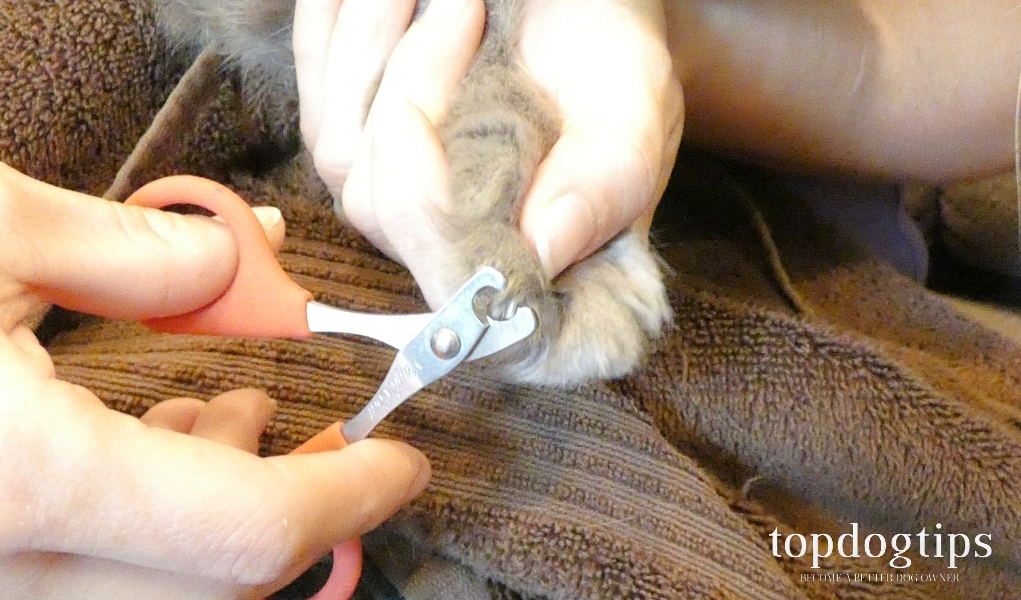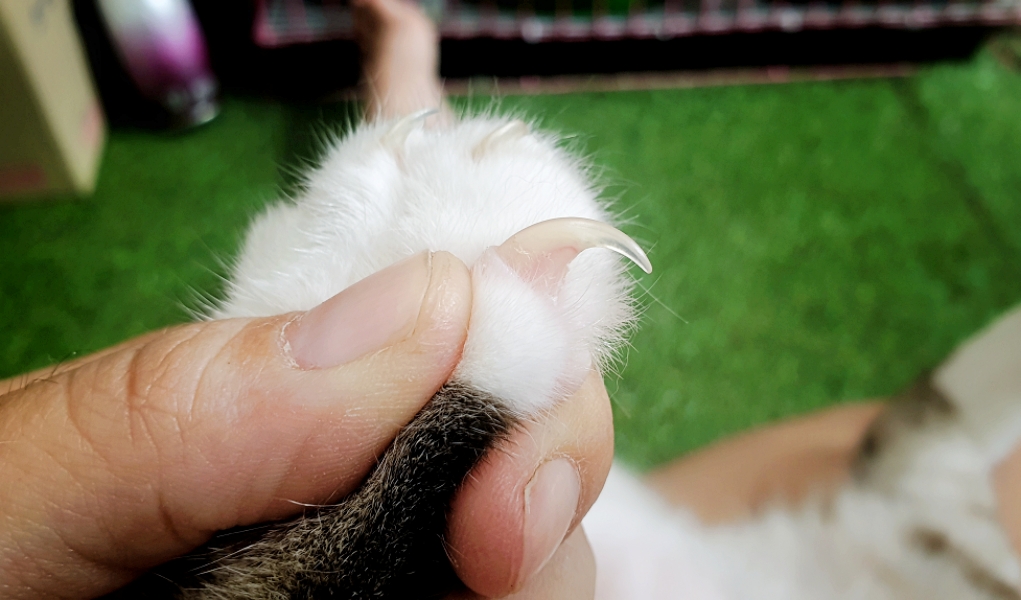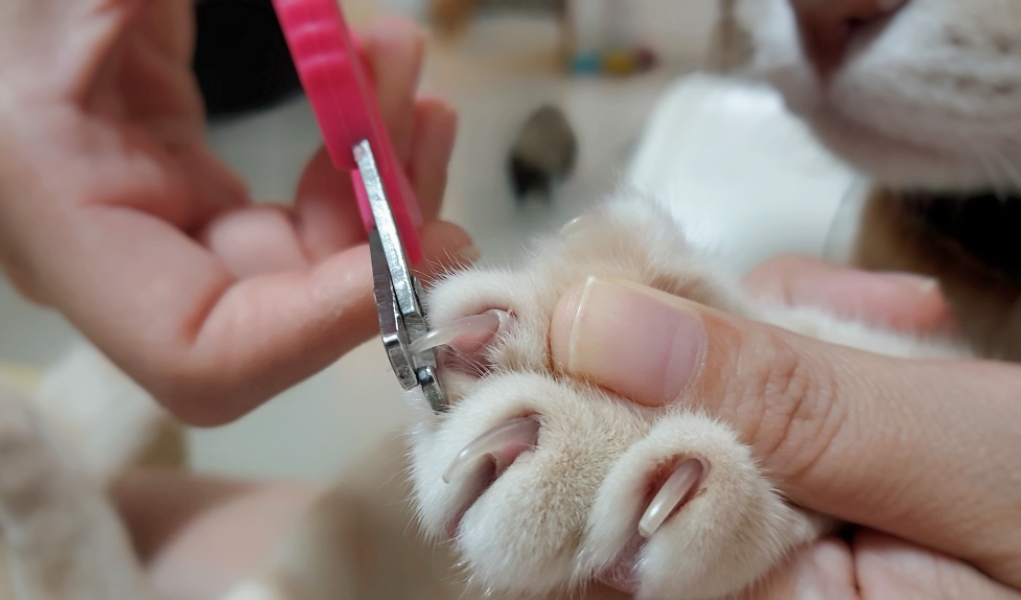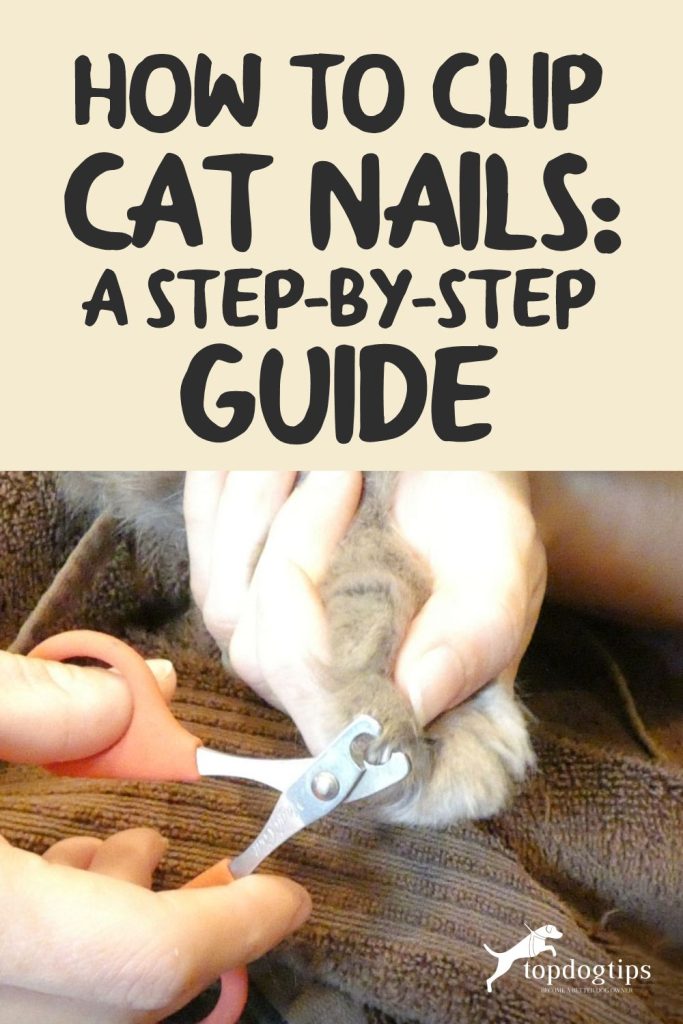Table of Contents
It is a common misconception that cats groom themselves and do not need their humans to help in this area.
The fact is, cats still require regular grooming, and knowing how to clip cat nails is part of that. Nail care is an important part of your cat's overall health and well-being.
Clipping your cat's nails regularly will also help to prevent damage to your home and belongings from sharp claws.
Trimmed nails won't snag on carpeting, furniture, or bedding. In rare cases, neglected nails can even curl around and stab into the pad of the toes.
You should trim your cat's nails at least once a month. Once you get your cat used to the routine, you could even do it every 2-3 weeks.
This guide will show you how to clip cat nails, how to get your cat used to the clippers, and how to avoid clipping the quick.
How To Clip Cat Nails
 If You Cut the Quick
If You Cut the Quick
Before we begin – what is “the quick”? This is the first question that most pet owners ask me when we're discussing how to clip cat nails.
The quick is the pink part that you can see inside your cat's nail. It is very sensitive because it contains blood vessels and nerves. If you happen to clip the quick by accident, it will be painful for your dog, and it will bleed profusely. Compare it to the way that you feel if your fingernail breaks or you clip it too short; it's not unbearable, but it is uncomfortable.
When you ask any professional groomer or veterinarian if they've accidentally cut the quick of a cat's nail before, they will all say yes. It happens to everyone, no matter how experienced you might be.
Fortunately, as much as you should avoid cutting into the quick, it's not the end of the world; worst case scenario, you clip the quick and it bleeds until you stop the bleeding.
1. Get the Right Supplies
The first thing you'll need to do is find the tools you need to use to clip your cat's nails. Tools you may need include:
- Traditional cat nail clipper (featured in my video)
- Nail grinder for filing (I use the newest Dremel)
- Styptic powder or pen/gel (to stop bleeding in case you cut the quick)
As you'll see in my video, I prefer to use traditional cat nail clippers. They're fast and easy to use, and that's what most professional groomers use as well.
Traditional clippers are like scissors. You squeeze the handles together and the blades clip the nail by coming together horizontally.
With guillotine-style clippers, the blades clip the nail vertically when you squeeze the handles together.
There really isn't much of a difference, it just depends on your personal preference and what's more comfortable for you.
Nail grinders are electric devices that file the nail down instead of clipping the tip-off.
I don't prefer these simply because it takes a lot longer to trim your cat's nails with a grinder than with regular cat nail clippers.
Also, your cat may be timid around a nail grinder because of the noise they make.
ALSO: Things Only A Cat Owner Understands
 2. Ease Your Cat Into It
2. Ease Your Cat Into It
It's best to start learning how to clip a cat's nails when you first adopt your kitty. If you start from the beginning, she'll get used to this regular grooming practice quickly.
If you adopt an adult cat that isn't used to having her nails clipped, it's possible to get her comfortable with it, but it will take more time and patience.
Begin by getting your cat used to you touching his paws. Watch the video above and note the way I hold Elsa's paw.
Hold your cat's paw in a similar way and practice pressing down on the joint behind the claw to get the nail to extend.
Cats' dispositions and temperaments can vary greatly. Some cats may just lie in your lap while you trim their nails.
Others will put up a much bigger struggle. As I demonstrate in my video guide, you can wrap your cat in a towel if he struggles while you're holding him.
After she's comfortable with you holding her paws, you can begin touching her toenails. Rub them and squeeze them so that she gets used to the feeling of pressure on the nails.
Now, you can bring out the nail clippers. Whichever type of clipper or Dremel that you choose, show it to your pet and allow her to sniff it.
When your cat is finished investigating the tool, just move the tool around and near her claws and touch the end of her nails with the device.
By now your cat should be used to you touching her paws and comfortable with the trimming device that you've chosen.
 3. How to Clip Cat Nails
3. How to Clip Cat Nails
My first piece of advice is don't be nervous. If you're nervous, your cat will sense that, and it will make her nervous too, making the whole process much more difficult.
Relax and understand that if you trim the nails too closely, you may cause him a bit of pain.
It's not great, but certainly not the worst thing in the world. Your cat will forgive you. In fact, she probably won't be mad at you at all.













